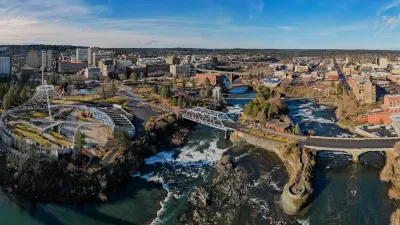More American adults are living with parents or relatives, largely due to financial reasons.

A report from the Pew Research Center by D’Vera Cohn, Juliana Menasce Horowitz, Rachel Minkin, Richard Fry and Kiley Hurst analyzes the makeup of multigenerational households, which are on the rise in the United States. "Multigenerational living has grown sharply in the U.S. over the past five decades and shows no sign of peaking," the authors write, noting that financial considerations and caretaking are cited as major reasons. "According to an analysis of census data from 1971-2021, the number of people living in multigenerational family households quadrupled during that time period, reaching 59.7 million in March 2021. The share more than doubled as well, to 18% of the U.S. population."
Some key takeaways from the report:
- "Among young adults ages 25 to 29, nearly a third (31%) live in multigenerational households, often in their parents’ home."
- "Americans living in multigenerational households are less likely to be poor than those living in other types of households. This is especially true of some groups that are economically vulnerable, such as unemployed people."
- "A third of U.S. adults in multigenerational households say caregiving is a major reason for their living arrangement, including 25% who cite adult caregiving and 12% who cite child care."
- "Upper-income adults in multigenerational households are more likely than those in other income groups to see the arrangement as temporary."
- "For the most part, the reasons for living in a multigenerational household do not vary between men and women."
FULL STORY: Financial Issues Top the List of Reasons U.S. Adults Live in Multigenerational Homes

Maui's Vacation Rental Debate Turns Ugly
Verbal attacks, misinformation campaigns and fistfights plague a high-stakes debate to convert thousands of vacation rentals into long-term housing.

Planetizen Federal Action Tracker
A weekly monitor of how Trump’s orders and actions are impacting planners and planning in America.

In Urban Planning, AI Prompting Could be the New Design Thinking
Creativity has long been key to great urban design. What if we see AI as our new creative partner?

Florida Seniors Face Rising Homelessness Risk
High housing costs are pushing more seniors, many of them on a fixed income, into homelessness.

Massachusetts Budget Helps Close MBTA Budget Gap
The budget signed by Gov. Maura Healey includes $470 million in MBTA funding for the next fiscal year.

Milwaukee Launches Vision Zero Plan
Seven years after the city signed its Complete Streets Policy, the city is doubling down on its efforts to eliminate traffic deaths.
Urban Design for Planners 1: Software Tools
This six-course series explores essential urban design concepts using open source software and equips planners with the tools they need to participate fully in the urban design process.
Planning for Universal Design
Learn the tools for implementing Universal Design in planning regulations.
Gallatin County Department of Planning & Community Development
Heyer Gruel & Associates PA
JM Goldson LLC
City of Camden Redevelopment Agency
City of Astoria
Transportation Research & Education Center (TREC) at Portland State University
Jefferson Parish Government
Camden Redevelopment Agency
City of Claremont





























